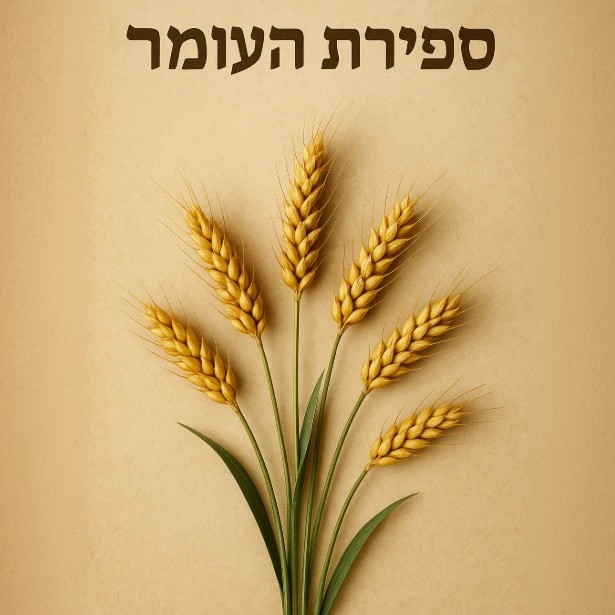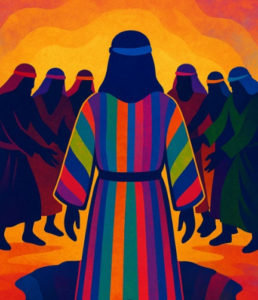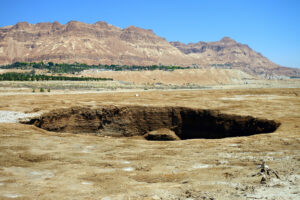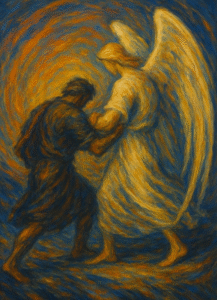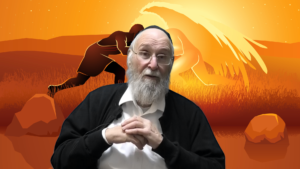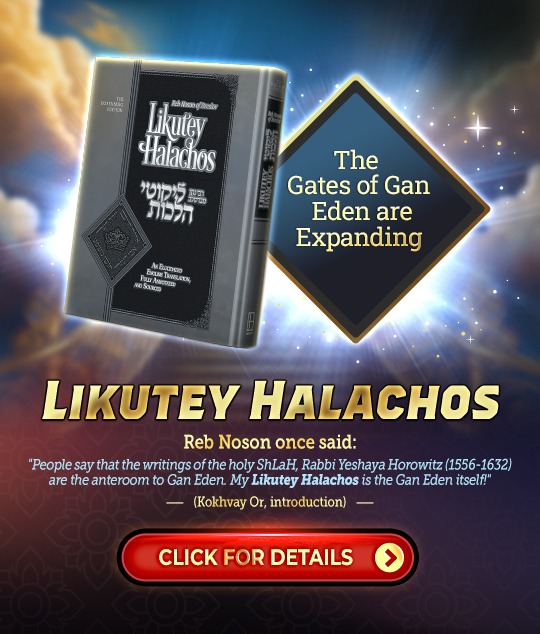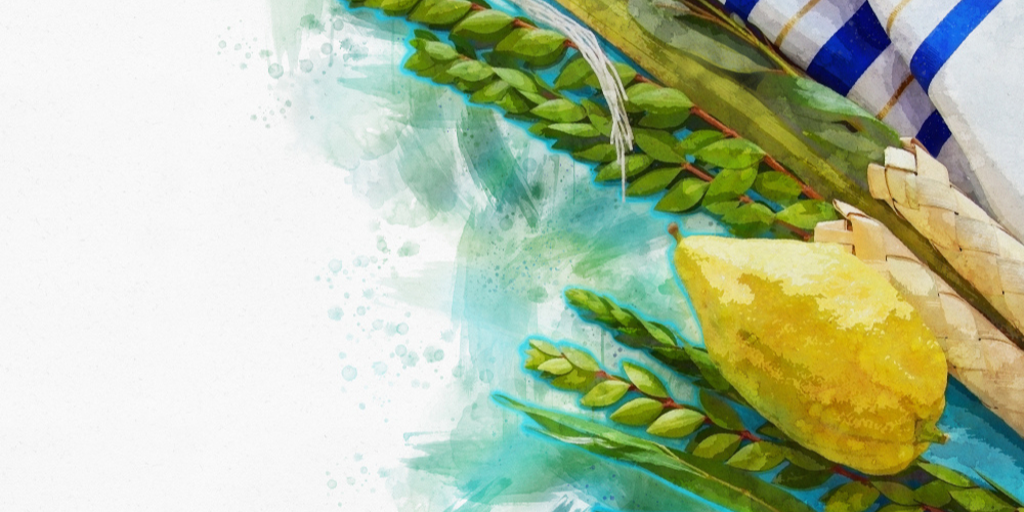Sefiras HaOmer and the Countdown to Geulah
ADAPTED FROM HIS AUDIO SHIUR ON EIN YAAKOV LESSON 130B – SANHEDRIN 97
Counting the Omer
In Parshas Emor (Vayikra 23:15–16), the Torah introduces the mitzvah of Sefiras HaOmer, the Counting of the Omer. Starting on the second night of Pesach, we count seven full weeks—forty-nine days—leading to the fiftieth day, the festival of Shavuos, the day we received the Torah. This count is not just about time; it’s a spiritual climb. Each day represents another step of purification and readiness, just as the Jewish people prepared themselves in the desert to stand at Har Sinai.
The structure of the Omer count is deeply symbolic. Just as we count 49 days and reach the 50th, so too in the agricultural and spiritual life of the Land of Israel, we count seven Shemittah cycles—seven-year periods where the land is worked for six years and rests in the seventh. After seven such cycles, we reach the 50th year, called Yovel—a year of freedom, return, and holiness. Yovel is the Shabbos of Shabbosos, the culmination of time, when debts are forgiven, slaves go free, and land returns to its original owners. In the same way that Shavuos is the Yovel of Torah, the spiritual pinnacle following 49 days of growth, so too the ultimate Yovel in history points to the coming of Mashiach. In the Gemara, a rabbi asks Eliyahu HaNavi—the prophet who appears throughout history to herald redemption—“Can you tell me when Mashiach will come?” What better authority could there be? Eliyahu answered: “Yes—after 85 Yovels.” A Yovel is 50 years. So 85 Yovels is 4,250 years from Creation. That means the first possible time for Mashiach to arrive was in the year 4250 on the Jewish calendar (490 CE). And heartbreakingly, that time passed. We weren’t ready.
Why Eighty-Five Yovels?
Why was that the first date? Why exactly 85 Yovels? This is a very important question. What is so remarkable about the number 85 that there needs to be 85 Yovels? The Meforshim say that this corresponds to a parshah in the Torah. We have some chapters in the Torah that are long ones and some that are short. The shortest chapter in the Torah is the chapter of “Vayehi b’n’so’a ha’Aron vayomer Moshe kuma Hashem.” It is so important a chapter that we say it in shul every time we take out the Sefer Torah to read. The parshah has only two verses. The translation of it is as follows: “And it was that whenever the Aron traveled in the desert, Moshe Rabbeinu would say, Kuma Hashem, Rise Hashem and let Your enemies be scattered. May those who hate You, flee from Your face. And when [the Aron] came to rest, he would say, ‘Shuvah Hashem’, return Hashem to the myriads of thousands in Israel”.
Emunas Chachamim
The two sentences in this parshah contain 85 letters. These 85 letters correspond to the 85 Yovels at which time Mashiach will come. But what is so important about the parshah “vayehi b’n’so’a ha’Aron” that it should determine the coming of Mashiach? The Gemara tells us that there is a debate about how many books of Moshe Rabbeinu there are. The average person who is very learned will say there are five, as we see they are called Chumashim, which means something divided into five. Yet the Gemara says there is a debate among the rabbis. Some say five, but Rabbi Yehudah says — “chatzvah amudehah shivah.” There are not five Chumashim, but rather there are seven. How do we get seven? We have the first three Chumashim; Bereishis, Shemos, Vayikra. Then we have the last one Devarim, that’s four. But the next to the last, known as Bamidbar, should not be counted as one because in the middle of it we have the parshah of “vayehi b’n’so’a ha’Aron“. So until “vayehi b’n’so’a” is considered one Chumash, the parshah of “vayehi b’n’so’a” itself is considered another Chumash and from there until the end of Bamidbar is considered a third Chumash. So in Rabbi Yehudah’s opinion, Bamidbar isn’t one Chumash, it’s three Chumashim. Three plus the other four is seven. Take note that equal value is played upon this one parshah of eighty-five letters. So much so that it’s considered an entire Chumash. Nobody says that the parshah of Shema Yisrael or the parshah of the Aseres Hadibros (the Ten Commandments) is a whole Chumash. Why are these two sentences so outstanding that they are considered as an entire Chumash?
True Emunas Chachamim
Reb Noson says it’s because this represents true emunas chachamim, having faith in the tzaddikim. In the end of Bamidbar, the last parshah is called Masei. This parshah tells of the forty-two journeys that the Jews made in the desert. The parshah starts with the words “Eileh ma’asei Bnei Yisrael,” these are the journeys that the Jews made in the desert. The word ‘eileh’, “these”, is a very famous word. It was the word used by the sin of the golden calf, where they said “Eileh elohecha Yisrael.” Rabbeinu Z”L says that the sin of idol worship is punishable by going into galus, exile. The sin of idol worship is erased by traveling and moving from place to place. So the “Eileh elohecha Yisrael” of the golden calf was corrected in this case with “Eileh ma’asei Bnei Yisrael,” the travels and journeys of Israel in the desert. The sin of idol worship is from a lack of faith. This lack of faith is mended by the tzaddikim, as we see “vayehi b’n’so’a ha’Aron,” when the Aron moved, “vayomer Moshe,” and Moshe Rabbeinu spoke. The moving and resting of the Aron is determined by Moshe Rabbeinu’s speaking.
The Crucial Role of the Tzaddik
The Gemara (Moed Katan 16b) brings a posuk, “tzaddik moshel B’yiras Elokim“. Hashem says, I rule over everything in existence. But in that case, who rules over Me? “Tzaddik moshel bi,” as it says, “tzaddik moshel b’yiras Elokim“. A tzaddik reigns supreme because when Hashem issues a decree, a tzaddik can pray and void the decree. On the other hand, If a tzaddik issues a decree, by blessing or cursing someone, Hashem must fulfill his words. This is how Hashem set it up because of the chashivus, the value that Hashem places on a tzaddik. In Hashem’s infinite greatness and heavenly modesty, He says a tzaddik rules over Me. I fulfill the bidding of a tzaddik. Says the Zohar Hakadosh, we find this when Moshe Rabbeinu came towards the burning bush, Hashem said to him, “remove your shoes”. This meant separate yourself from your wife. You’re now going to receive a new bride. Your bride will now be the Shechinah. You are the husband of the Shechinah, and therefore, Moshe Rabbeinu is called the vav in Hashem’s name.
Where do we find this statement, asks the Zohar Hakadosh? In the last chapter of the Torah it says, “V’zos habrachah asher beirach Moshe ish ha’Elokim,” Moshe Rabbeinu was called ish. Ish means husband. “Ish ha’Elokim,” the husband of the Shechinah. The husband in Hebrew is ba’al, a master. A master is one who gives an order and the order is fulfilled. And this parshah of “Vayehi b’n’so’a ha’Aron vayomer Moshe kuma Hashem.” Who dares to order Hashem to rise and rest? Only the master could give these orders. So we see the greatness of a tzaddik. This idea is really something that we can’t fathom. How can we make sense of the idea that a person could “rule over Hashem”? This refers to a tzaddik of the highest level — like Moshe Rabbeinu — whose spiritual greatness gives him extraordinary influence in Heaven. This is not because the tzaddik is above Hashem chas v’shalom, but because Hashem wills it to be so — out of His deep love and honor for those who serve Him with absolute purity.
- 0 comment

